Introducción
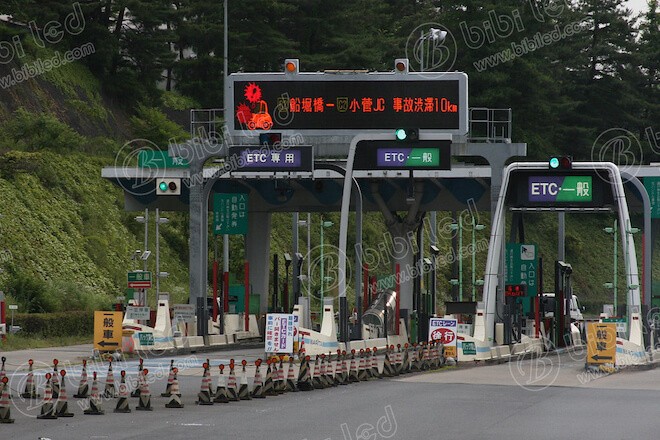
Imagine that when you are driving on the highway and are about to pass through the toll station, a clear and bright LED display comes into view, which not only quickly informs you of the current toll and lane status but also updates the road conditions ahead in real-time. Does this scene make you feel that highway toll stations have become smarter and more convenient?
Indeed, pantallas LED are quietly changing the face of highway toll stations. It not only improves the efficiency of information transmission but also gives drivers a brand-new travel experience.
This article will take you to an in-depth understanding of the wide application of LED displays in highway toll stations, revealing how it helps to achieve intelligent upgrades in toll stations and providing you with practical information on how to better use this technology to improve travel experience. Whether you are a highway manager or a driver who often drives, you can gain valuable knowledge and inspiration from this article.
1. What are the applications of LED displays in highway toll stations
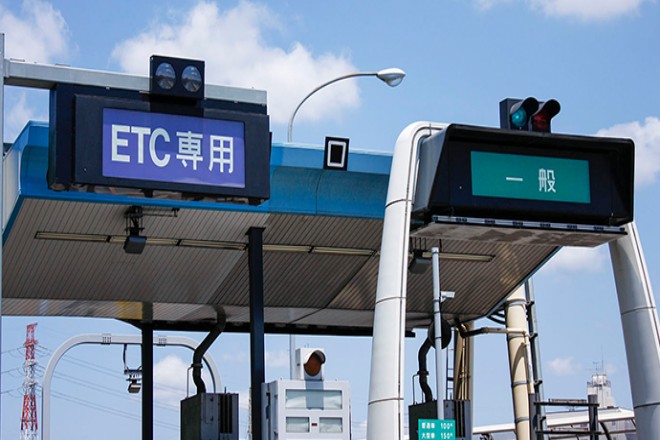
1). ETC lane display
1.1). Functional overview:
ETC lane display is an LED display device specially designed for electronic toll collection (ETC) systems. Its main function is to display the traffic information of the ETC lane to passing vehicles, including but not limited to the traffic status of the vehicle (such as “the fee has been deducted, please pass”), the charging standard, whether the lane is open, and other key information.
1.2) Ventajas:
Immediacy: The LED display screen can respond quickly and update the lane status in real time to ensure that the driver can obtain the latest traffic information in the first time.
Intuitiveness: Through clear text or icon display, the driver can easily read the information without stopping or slowing down, which improves traffic efficiency.
Efficiency: During peak hours, the fast-passing capacity of the ETC lane is maximized, reducing congestion and delays caused by unclear information.

2). Highway toll information board
2.1). Functional overview:
The highway toll information board is a large outdoor LED display device, usually installed in key locations such as highway toll stations and ramps, and is used to provide comprehensive and timely traffic information to passing drivers.
2.1). Specific role:
- Real-time information update:
The information board is connected to the network and can receive and display the latest traffic information in real time, such as road condition updates, accident notifications, road closures, etc., to ensure that the information obtained by the driver is the latest.
- Display diversified information:
Not only can it display basic traffic information, but also weather warnings (such as heavy rain, haze), changes in toll standards, traffic congestion, pictures or videos of accident sites, etc., to provide drivers with all-round information support.
- Improve traffic efficiency:
By displaying real-time road conditions, the information board guides drivers to avoid congested sections and choose the best driving route, effectively alleviating traffic pressure and improving overall traffic efficiency.
- Safety warning function:
When necessary, the information board issues safety tips and warning information, such as “Construction ahead, slow down” and “Be careful of crosswinds”, etc., to remind drivers to pay attention to driving safety and reduce the occurrence of traffic accidents.
- Gestión remota:
The information board supports remote management and control. Managers can uniformly monitor and update the content of multiple information boards in the central control room to ensure the accuracy and timeliness of the information. This centralized management method greatly reduces operation and maintenance costs and improves management efficiency.
2. The role and advantages of the LED display screen in the ETC lane
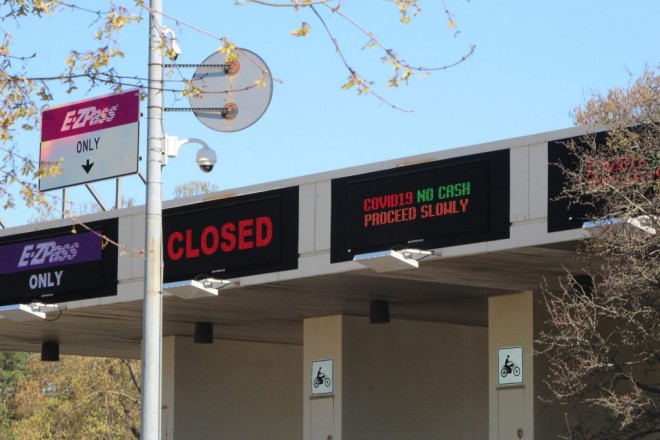
1). Use (Function)
The LED display screen of the ETC lane is like a “smart assistant” on the highway. It mainly helps drivers quickly understand the status of the ETC lane:
Indicate lane status: The screen will display words such as “ETC dedicated lane,” “lane open,” or “lane closed” to tell the driver whether the lane can be used.
Display traffic information: When the vehicle passes, the screen will display the toll or license plate number of the vehicle so that the driver knows whether the toll has been successfully deducted so that the driver can feel more at ease.
2). Benefits (Advantages)
Clever design: The display screen adopts a special design that allows the wind to blow through more easily so that there will be no problems due to strong wind, and the heat dissipation is better, ensuring that the display screen can work stably for a long time.
Lightweight and compact: The display screen is not heavy or large, and it is easy to install and will not bring additional burden to the toll station. Moreover, it can be flexibly installed in different places according to needs.
Increase the speed of passage: With this display screen, the driver can know the situation of the lane more quickly, without hesitation or slowing down due to unclear conditions, so that the speed of the entire ETC lane is faster.
A good helper for smart traffic: This display screen is part of the smart highway toll station, which can make traffic management more intelligent. For example, it can update traffic information in real time, help drivers avoid congested sections, and make traffic smoother.
In general, the ETC lane LED display screen is like a “smart” road sign, which not only allows drivers to find the right lane faster but also allows them to keep up to date with the latest traffic information, making the entire highway more efficient and safe.
3. The role and advantages of highway toll information boards
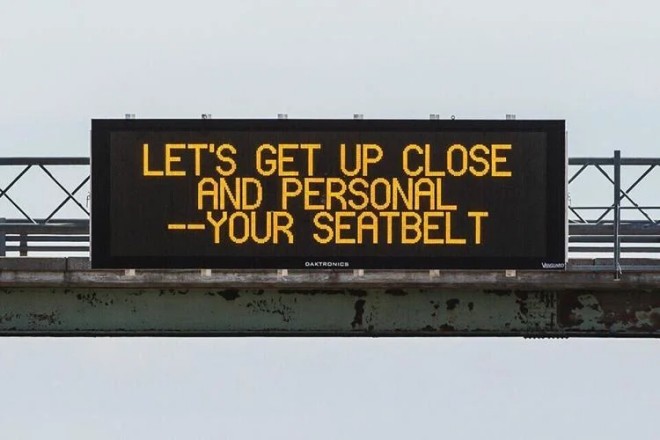
1). Use (function): “Road condition assistant” for drivers
The highway toll information board, also known as a variable message board or VMS (Variable Message Signs), is an indispensable information release tool on the highway.
It is like a “road condition assistant” designed specifically for drivers, providing the following main functions:
Real-time traffic information: The information board can display the current traffic flow, speed limit, congestion, etc., on the road in real-time, helping drivers quickly understand the road conditions and avoid blindly driving into congested sections.
Clear charging standards: For sections with toll booths, the information board will clearly and accurately display the charging standards to avoid doubts or disputes caused by unclear fees and ensure the transparency and fairness of the charging process.
Road condition warning and prompts: The information board can release real-time warning information on road conditions such as road construction, closures, and accidents, reminding drivers to plan routes in advance, avoid dangerous or inconvenient areas, and ensure driving safety.
Weather and environmental information: Under special weather or environmental conditions, the information board will provide weather warnings, slippery roads, low visibility, and other prompts to help drivers adjust their driving strategies and ensure driving safety.
Safety warnings and guidance: The information board will also issue safety tips and warning information when necessary, such as “Construction ahead, slow down” and “Be careful of crosswinds”, etc., to guide drivers to drive safely and reduce the risk of traffic accidents.
2). Benefits (advantages):
- Rapid information update:
The information board can receive and display the latest traffic information in real-time through a network connection, ensuring that the information obtained by the driver is the latest and accurate. This real-time nature is of great significance to alleviating traffic congestion and improving road traffic efficiency.
Remote management and control:
The information board supports remote management and control functions. Managers can uniformly monitor and update the content of multiple information boards in the central control room. This centralized management method greatly improves management efficiency and reduces maintenance costs.
Contenido rico y diverso:
The information board uses advanced display technology to clearly and intuitively display information in various forms such as text, graphics, and numbers. This diverse content not only improves the readability of the information, but also increases the interest of the information, making drivers more willing to pay attention to and accept this information.
Intelligent guidance and decision-making:
The information board can intelligently guide drivers to choose the best route based on real-time road conditions, avoid congested sections, and improve driving efficiency. At the same time, it can also provide decision-making support for drivers to help them make more informed driving decisions.
Improve the level of highway management:
As an important part of the highway management system, the information board can reflect the road conditions in real-time and provide decision-making support for the management department.
By collecting and analyzing the data on the information board, the management department can more accurately grasp the road conditions, formulate more effective management measures, and improve the level of highway management and service quality.
4. Other applications of LED display screens in highway toll stations
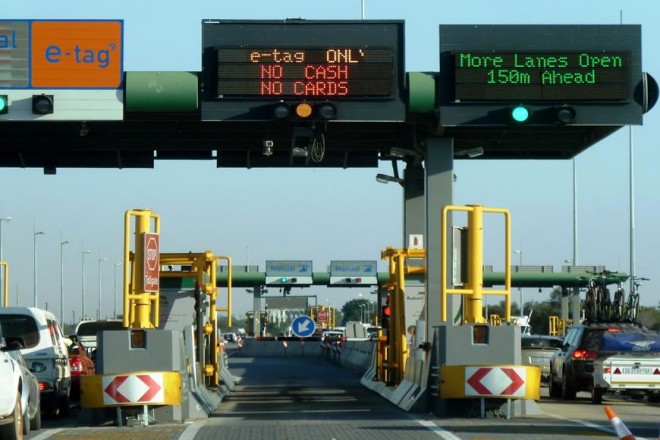
1). Dual-color and full-color displays
Let’s talk about what they are
Dual-color displays are like traffic lights at home, with red and green colors, and can display some simple information, such as “tolling” or “passing.” Full-color displays, like color TVs at home, can display a variety of colors and pictures, and the information is richer and more beautiful.
What do they do at highway toll stations?
At highway toll stations, dual-color displays will tell us some basic traffic information, such as how much the toll is.
Full-color displays are even more powerful; they can display maps and weather and even tell us where there are traffic accidents so that we can prepare in advance.
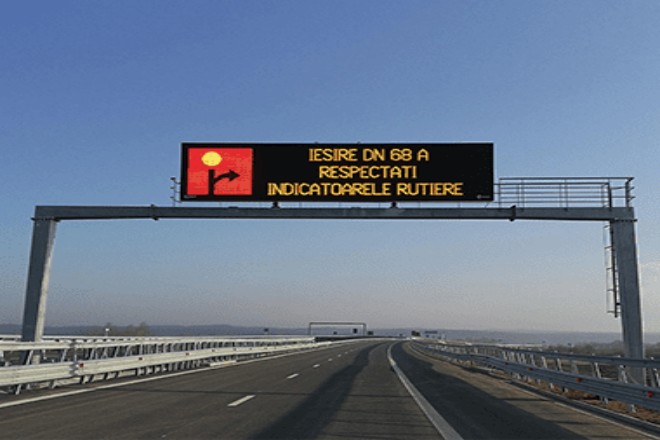
2). Variable electronic information screen with gantry type
How it works
The variable electronic information screen with gantry type is like a big sign across the highway, which will display various information. This information is controlled by a remote computer, so we can update it at any time.
Its importance
This information screen is very important because it can tell us the road conditions ahead, such as where there is a traffic jam and where there is construction. In this way, we can choose other routes in advance to avoid traffic jams and improve our driving safety.
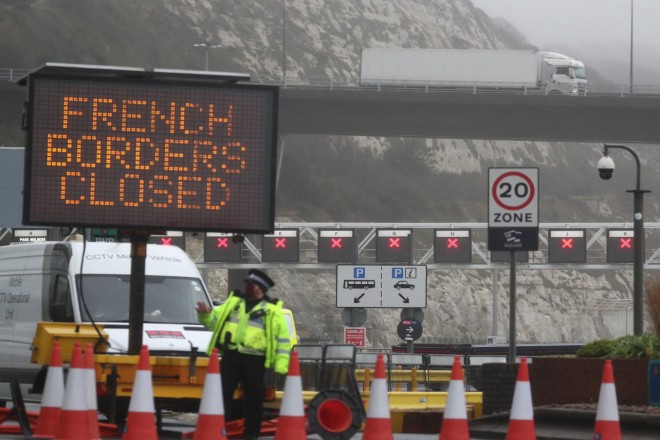
3). Mobile traffic information screen and guide warning screen
Their features
The mobile traffic information screen is like a big movable sign which can be placed wherever it is needed. The guide warning screen is usually installed on the construction vehicle to remind other vehicles to pay attention.
Their role in construction
When the highway is under construction or maintenance, these two display screens come in handy. The mobile traffic information screen can tell us how to go during the construction period, while the guide warning screen can remind us that there is construction ahead and we should pay attention to safety.
5. The transformation of the management mode of high-speed toll stations by LED display screens
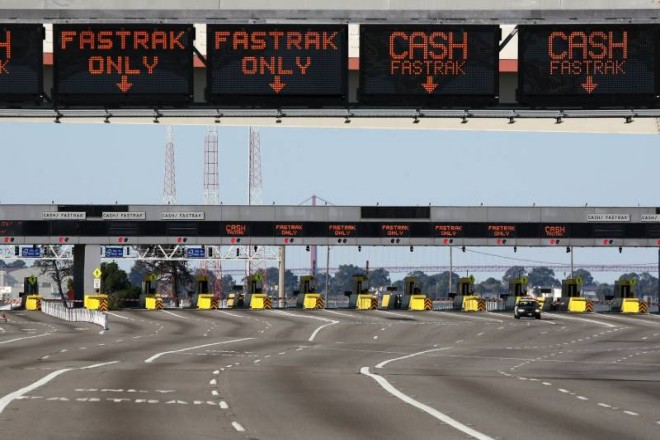
1). Faster and more accurate information transmission
In the past, high-speed toll stations may have to rely on manual shouting or static signs to understand the road conditions.
But now, with LED display screens, toll stations can display the latest traffic information in real time, such as where there is a traffic jam and what the toll standard is, so that drivers can know immediately when they arrive at the toll station, without having to go to other places to check the information, which is fast and accurate.
2). More reasonable resource allocation
LED display screens can also help toll stations arrange work better. For example, if a lane is crowded with vehicles, the toll station can quickly adjust and guide vehicles to other lanes, so that they will not be blocked and everyone can pass faster.
Moreover, the display screen can also display the work status of the toll collectors, so that the management staff can better arrange the staff and ensure the smooth operation of the toll station.
3). Improved service quality
LED display screens not only display traffic information but also play a lot of other content, such as weather forecasts, travel tips, and advertisements.
In this way, drivers will not feel bored while waiting for tolls and can get a lot of useful information. At the same time, the information on the display screen is very clear, and everyone can know what is going on at a glance, so the toll station will appear more transparent and reliable, and the service quality will naturally improve.
Conclusión
In summary, the application of LED display screens in high-speed toll stations not only improves the efficiency of information exchange, optimizes resource allocation, but also improves service quality and meets the driver’s demand for diversified information.
With the continuous advancement of technology and the deepening of applications, the functions of LED display screens in high-speed toll stations will be richer, and their role will be more prominent.
Finalmente, si quieres saber más sobre las pantallas LED, Por favor póngase en contacto con nosotros.
